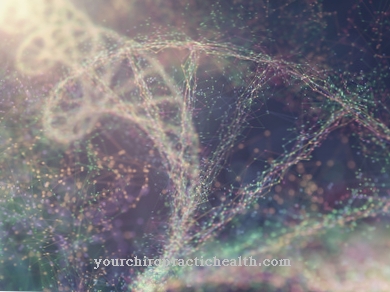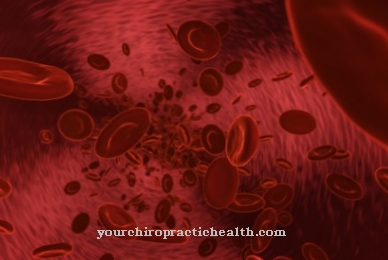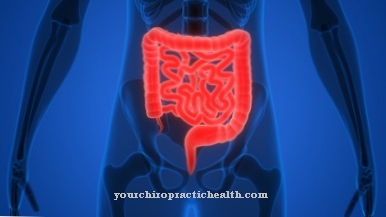The female ejaculation is similar to male ejaculation and takes place during sexual climax. A secretion is secreted from the vaginal glands in about half of all women. The tasks and the exact source of the female ejaculate have only been researched to a limited extent, which is why precise knowledge is difficult.
What is female ejaculation?

The female ejaculate is a secretion that the woman secretes in spurts on the climax of sexual arousal.
Aristotle already reported a secreted liquid during the female orgasm. In the 17th century, the Dutch doctor de Graaf described a gush-like discharge of secretions during female arousal. During the 17th century the secretion was also known as the river of joy. Since the 20th century, however, many scientists have denied the existence of female ejaculate. Others keep silent about the secretion. A kind of social and scientific tabooing of the phenomenon has occurred.
Because of this taboo, there is still a great need for research into female ejaculate. At least today, science has agreed that the phenomenon presumably exists.
Function & task
The end sections of the female urethra are equipped with several tiny exits. From these outlets and from the spongy-looking tissue around the urethra on the right and left, some women secrete a clear secretion with an odor and intense taste during orgasm. Female ejaculation is associated with intense pleasure for women.
Chemical analyzes of the intermittently released secretions have discovered both urine and secretions from the paraurethral gland in the liquid. The paraurethral gland is the female sex gland and is similar in its functions and properties to the male prostate.
The existence of female ejaculate is now relatively undisputed. However, not every woman ejaculates during climax. How many women experience ejaculation is difficult to estimate. Some studies speak of around half of all women. Others speak of only five percent.
The source of the secretion is also not yet known. Many scientists suspect the paraurethral glands or the Bartholin glands as the source. Others speak of uterine, tubal or cervical fluid in the female ejaculate. Sometimes there is also talk of a transudate fluid that should come from the urethra (urethra).
According to some scientists, certain parts of the female ejaculate probably come directly from the bladder. However, the calcium content of the liquid speaks against this theory. For a long time, women were nonetheless treated for incontinence after reporting their ejaculation. For this reason, female ejaculation is still associated with feelings of shame for many women today.
Overall, research today assumes that the amount, color and frequency of female ejaculation varies considerably from woman to woman and is not least related to the woman's lifestyle and eating habits.
Since the phenomenon was taboo for some time, there remains a great need for research into the source, composition and function of the secretion. Some theories today assume that pheromones are secreted with the secretion. Pheromones are fragrances for species-specific and non-verbal communication about biochemical substances. They automatically and unconsciously cause relatives to react in a certain way.
It has been proven today that sex pheromones do play a role in humans. To what extent they are relevant for female ejaculate remains unclear.
Illnesses & ailments
For some time, female ejaculation has been equated with incontinence during sexual climax. At the time, medicine made a distinction between women with existing incontinence and patients without further signs of incontinence. Doctors assumed that while losing control during orgasm, involuntary urination can occur. In their opinion, this involuntary leakage was due to the relaxation of the bladder muscle. The stimulation and stretching of the vaginal wall during sexual intercourse has also sometimes been rated as the cause of urination during the sexual act. Pelvic floor exercises and similar measures should prevent the phenomenon.
Female ejaculation has long been associated with great shame because of the connotation of incontinence. For some women, even today, ejaculation of several milliliters is said to cause psychological complaints that have a negative effect on sex life.
As a rule, female ejaculation is no longer treated as a disease-related phenomenon. Rather, the complete absence of lubrication during the sexual act is now considered serious. Vaginal dryness is often associated with pain and consequently affects female sex life.
Both psychological and biological factors are considered to be the causes of drought today. The degree of arousal should influence the secretion release. In the case of psychological stress, arousal should only be possible to a minimum and the secretion does not occur. Hormonal changes are also said to play an increased role in connection with vaginal secretions.
Because female ejaculation is taboo, the associated complaints and possible diseases have so far been little researched.


























